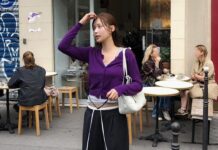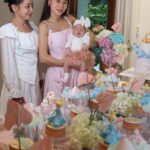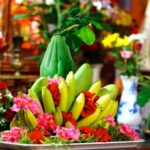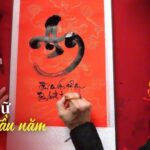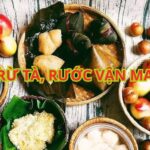In Vietnamese tradition, the first day of the lunar month, also known as “ngày sóc,” marks the beginning of a new temporal cycle. In Hán Việt, “sóc” signifies a fresh start, the moment when the month’s energy begins to flow. This day is thus considered sacred, deeply intertwined with profound spiritual and cultural values.
Beyond being a mere transition from one month to the next, “ngày sóc” is an occasion for descendants to honor their ancestors, offering prayers and gratitude to the departed. It is also regarded as a “ngày cát tường”—an auspicious day, the most favorable in the month according to Eastern beliefs. If families are busy, the ritual can be performed on the afternoon of the 30th day of the previous month without diminishing its sacred significance.
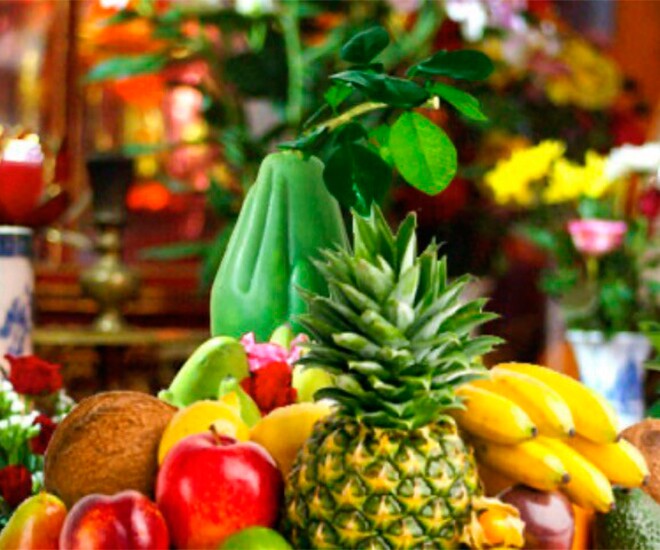
The offerings on the altar during the first day need not be elaborate or extravagant. What matters most is sincerity. Families can prepare simple offerings according to their means, such as incense, fresh flowers, betel leaves, and a cup of water. Those with greater resources may add a savory tray with sticky rice, chicken, and wine to express their reverence. Whether the offering is modest or grand, the essence lies in the heartfelt devotion.
Before performing the ritual, the officiant typically bathes, rinses their mouth with fragrant water, washes their hands with leaf water, and even steams their face with betel leaves to ensure purity. When lighting incense, the worshiper should dress neatly and solemnly, avoiding revealing attire like off-shoulder tops, short skirts, or shorts, to show respect for the ancestors.
The first day of the ninth lunar month in the Year of the Snake falls on a Tuesday (October 21st in the Gregorian calendar). According to feng shui expert Song Hà, the timing of incense lighting depends on family customs, but this year’s first day of the ninth month offers three auspicious time slots:
Mão Hour (5:00 AM – 7:00 AM)
Thìn Hour (7:00 AM – 9:00 AM)
Mùi Hour (1:00 PM – 3:00 PM)
These time slots are believed to bring good fortune and smoothness, ideal for offering prayers for a prosperous new month. However, if families cannot adhere to these times, there is no need to worry. In Vietnamese spirituality, the essence is “tâm” (heart)—as long as the devotion is sincere, ancestors will bless and protect, ensuring a peaceful and successful month.
5 Taboos for the Altar on the First Day of the Month
Placing “cành vàng lá ngọc” on the altar
Many people, after visiting temples, bring home “cành vàng lá ngọc” to place on the altar for good luck. However, in feng shui, this is discouraged. The origin and energy of these items are often unknown, and they may carry negative influences from various places and people. Placing them on the altar can disrupt the sanctity and spiritual energy of the worship space. Instead, families should prioritize items with clear origins and purity, reflecting reverence and sincerity.
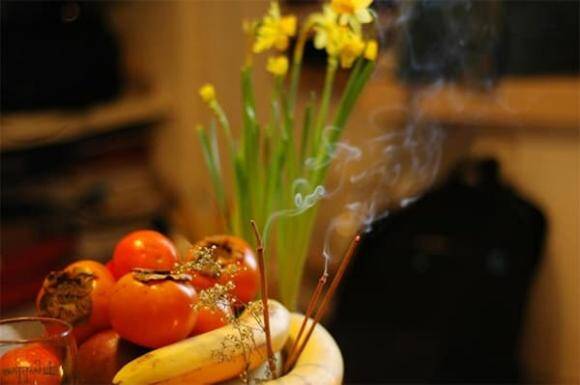
Displaying items with odd shapes or dark colors
The altar is a sacred space symbolizing solemnity and purity. Placing items with strange shapes, dark colors, or a gloomy aura is inappropriate. Such items not only diminish the sanctity but can also create a heavy atmosphere, affecting the family’s feng shui and vitality. Opt for items with graceful shapes and soft colors to maintain a warm and harmonious worship space.
Offering fruits with strong odors
Purity is paramount when offering fruits on the altar. Strong-smelling fruits like durian or jackfruit can overwhelm the solemn atmosphere, causing discomfort. Instead, bananas, oranges, mangoes, and apples, with their mild fragrances and attractive appearance, are ideal for maintaining the altar’s elegance and sanctity during the first days of the month.
Displaying artificial fruits
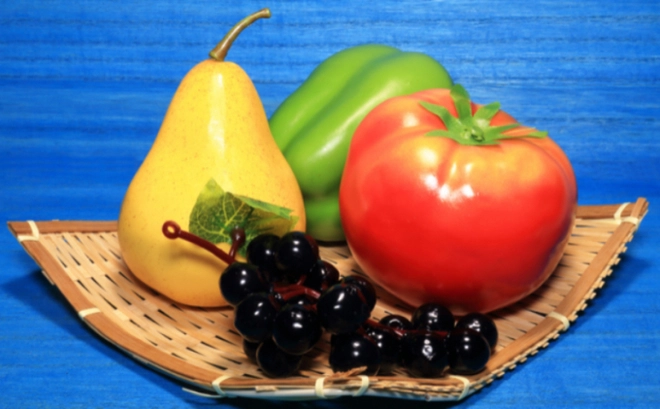
Artificial fruits, though convenient and durable, are unsuitable for spiritual practices. Offerings on the altar should be natural, carrying genuine essence to express sincerity. Artificial fruits lack spiritual energy and fail to convey respect for ancestors. Displaying them makes the worship space feel rigid and less sacred.
Offering low-quality items
A critical taboo is offering damaged, spoiled, or used food and drinks on the altar. Such items not only diminish the ritual’s solemnity but also show a lack of respect for the ancestors. Each incense stick lit on the first day should be accompanied by fresh, intact, and pure offerings, symbolizing gratitude and reverence from descendants to their forebears.
5 Flowers to Avoid on the Altar During the First Day of the Ninth Month
Flowers are essential on the ancestral altar, symbolizing reverence and purity. However, not all flowers are suitable for worship. Choosing the right flowers carries spiritual significance and enhances the ritual’s solemnity. Here are five flowers to avoid, especially on the first day of the ninth month:
Jasmine
Despite its purity and pleasant fragrance, jasmine is associated with inappropriate folk sayings, making it unsuitable for ancestral worship.
Cúc vạn thọ (Marigold)
With its vibrant yellow color, marigolds symbolize luck but are linked to sorrow and mourning in feng shui, making them inappropriate for the altar. Their strong scent is also less ideal for enclosed spaces.
Lilies
Though beautiful and fragrant, lilies are often used in festivals or worship of the Holy Mother. In ancestral worship, they are avoided as the word “ly” (lily) evokes separation, contradicting the desire for family unity.
Orchids
Orchids, luxurious and long-lasting, are popular during Tet but unsuitable for the altar. Their vibrant colors and the word “phong” (orchid) imply recklessness, clashing with the altar’s solemnity.
Frangipani (Plumeria)
Despite its light fragrance and purity, frangipani is traditionally avoided in worship due to its shape and association with temples and cemeteries, making it inappropriate for the ancestral altar.
The information provided is for reference and reflection only!
The Perfect Timing to Burn Incense Tomorrow – 1st of June on the Lunar Calendar: 3 Things to Do to Invite Prosperity and Ancestral Blessings
For the Vietnamese, the first day of the lunar month holds a special significance beyond just marking the beginning of a new month. It is steeped in profound spiritual meanings. According to renowned Feng Shui expert, Phung Phuong, the 1st of June, 2025 (6/1/2025 in the Vietnamese lunar calendar), presents an auspicious time window to offer incense and prayers for prosperity and peace for the household.
What Does Getting Calligraphy Blessings Mean for the New Year?
“As the Lunar New Year approaches, the vibrant culture of Vietnam comes alive with a unique tradition. The age-old custom of ‘xin chữ’ or ‘asking for calligraphy’ is a beloved practice where locals seek auspicious words and wishes for the coming year. This ancient ritual adds a touch of magic to the festive season, and it’s a tradition that truly sets Vietnam apart. The art of calligraphy and the choice of auspicious words are believed to bring good fortune, making it a cherished part of the Lunar New Year celebrations.”

